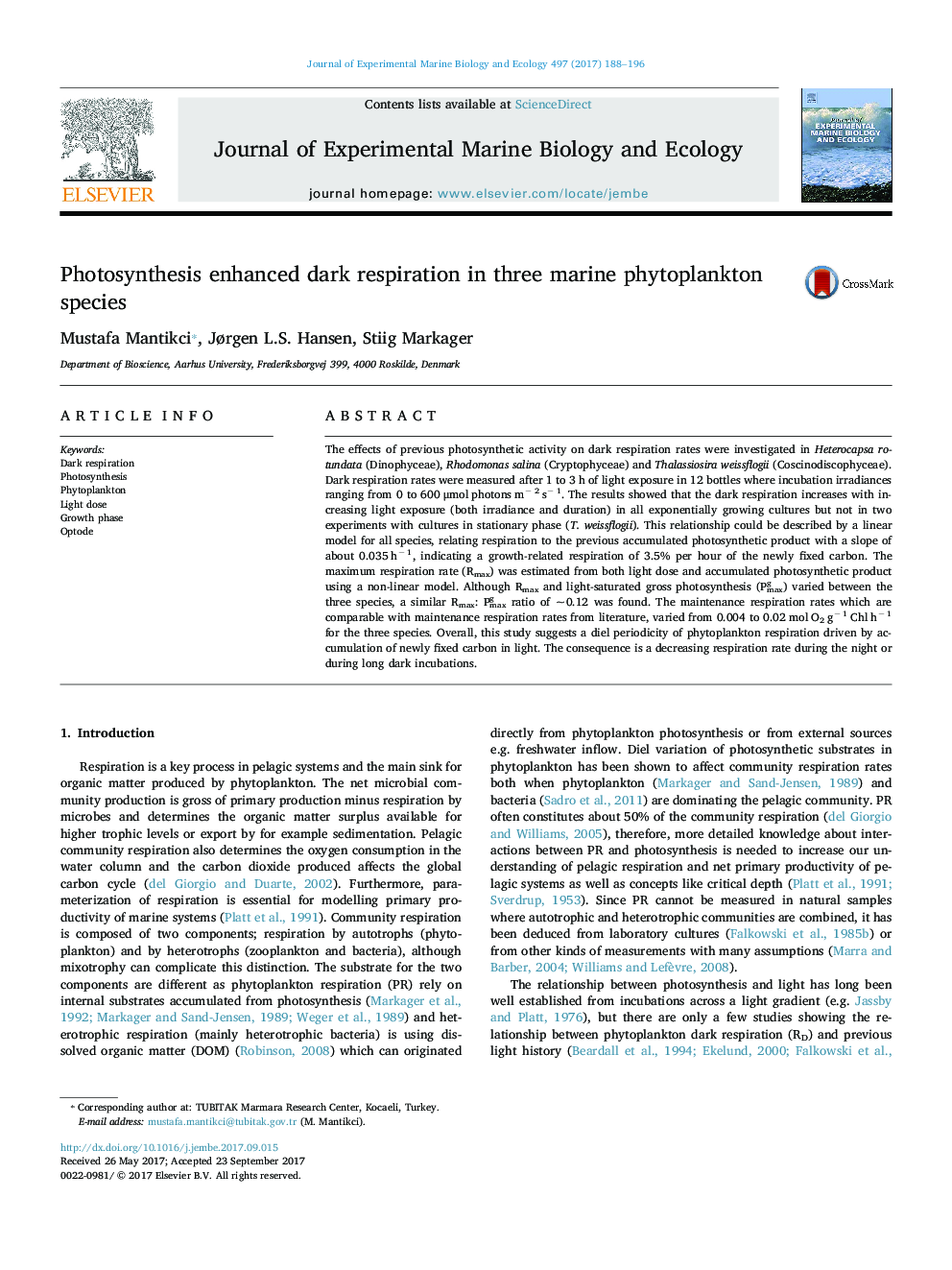| Article ID | Journal | Published Year | Pages | File Type |
|---|---|---|---|---|
| 5744447 | Journal of Experimental Marine Biology and Ecology | 2017 | 9 Pages |
Abstract
The effects of previous photosynthetic activity on dark respiration rates were investigated in Heterocapsa rotundata (Dinophyceae), Rhodomonas salina (Cryptophyceae) and Thalassiosira weissflogii (Coscinodiscophyceae). Dark respiration rates were measured after 1 to 3 h of light exposure in 12 bottles where incubation irradiances ranging from 0 to 600 μmol photons mâ 2 sâ 1. The results showed that the dark respiration increases with increasing light exposure (both irradiance and duration) in all exponentially growing cultures but not in two experiments with cultures in stationary phase (T. weissflogii). This relationship could be described by a linear model for all species, relating respiration to the previous accumulated photosynthetic product with a slope of about 0.035 hâ 1, indicating a growth-related respiration of 3.5% per hour of the newly fixed carbon. The maximum respiration rate (Rmax) was estimated from both light dose and accumulated photosynthetic product using a non-linear model. Although Rmax and light-saturated gross photosynthesis (Pgmax) varied between the three species, a similar Rmax: Pgmax ratio of ~ 0.12 was found. The maintenance respiration rates which are comparable with maintenance respiration rates from literature, varied from 0.004 to 0.02 mol O2 gâ 1 Chl hâ 1 for the three species. Overall, this study suggests a diel periodicity of phytoplankton respiration driven by accumulation of newly fixed carbon in light. The consequence is a decreasing respiration rate during the night or during long dark incubations.
Related Topics
Life Sciences
Agricultural and Biological Sciences
Aquatic Science
Authors
Mustafa Mantikci, Jørgen L.S. Hansen, Stiig Markager,
